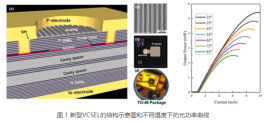antiterror13
Brigadier
Would Xenon based be easier and cheaper to implement than Tin (even lower efficacy) ?
It’s probably going to be a lot less complicated for debris management but it will require a far more powerful feed laser to get equivalent light output, and laser power is the primary technical constraint for LPP systems.Would Xenon based be easier and cheaper to implement than Tin (even lower efficacy) ?
甘茂平告诉我们,至臻光学已突破超精密抛光关键技术,全世界最大口径的离子束超精密加工系统也由至臻光学制造,目前已实现业界领先亚纳米级工艺能力!
Another ultra precision optics machining tool maker from Chengdu. Supplier of satellite camera with worlds highest resolution and world’s largest aperture ion beam ultra precision machining center with subnanometer capability. My guess for usage scenarios: telescopes and high/hyper NA euv mirrors世界最高分辨率的卫星相机
The laser mentioned in this article reached 150 kw, not 60 kw, actually. The laser technology being discussed is a multi-channel YAG fiber laser. By 2018 they got to 40 kw with 32 combined fiber channels, but they’ve pushed this laser technology to 150 kw with 60 channels.The power of the LPP laser driving light source of the only commercial extreme ultraviolet lithography machine can reach at least 60 kilowatts according to this route.
Bytedance denied that
I wonder how did this pass the US restriction. Tiktok might be Singapore based but the majority is owned by a Chinese firm

